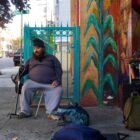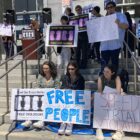Because investigative journalism isn’t artifice. Or, at least, it shouldn’t be. And that’s not what I practice. Some people have expressed concerns that our story will be negative, and this missive is my attempt to clear the air:
We never aim to be negative, because it is the responsibility of the journalist to present a fair and unbiased story. And I’m certainly not out to expose wrongdoings. It’s my intent to inform Bay Area residents about the many facets of this bridge project and how a likely toll increase isn’t about just asking for more money but about how it fits into the larger picture of politics, seismology and ambitious engineering. Before I became a journalist, I had a past life as a structural engineer — I obtained my master’s in Structural Engineering from UC Berkeley — and have always been fascinated with the role of bridges in our daily lives.
This story is about contextualizing the cost overruns, which aren’t news because they’ve been reported before. Because this project is so massive, the story has been presented in bits and pieces over the years. The withering of in-depth explanatory journalism in the Bay Area has meant that coverage of the Bay Bridge is on a breaking-news basis — the staffs at the Chronicle, Oakland Tribune and San Jose Mercury News don’t have the time or the manpower these days to produce the deeper story. What we’re writing is a great explanation of the cost overruns — the overruns aren’t news, but the context is.
From the very beginning, we’ve been working with the staff at the MTC and the Bay Area Toll Authority not just to collect data but to properly interpret it. Many of the documents that we’re reviewing require the expertise of the agency staff to translate their importance into layman’s terms. That’s our number one priority: make this complicated project simple enough so that our readers can parse the information that’s available to them (everything we review is publically available, but most people aren’t such gluttons for punishment).
Most importantly, we’ve conducted some preliminary interviews with the officials at BATA, including chief financial officer Brian Mayhew and legislation and public affairs director Randy Rentschler. My colleagues and I speak with staff members nearly every day, and I believe in building relationships and developing trust. I can only write the facts and the more I speak with these experts, the more I’ll understand. I can’t speak honestly with them if I presume they are doing something wrong and if I assume I’ll be writing a negative story. As the journalist, I’m there to ask questions and above all listen to what they are telling me. I’ve found that the story writes itself when you do the reporting because you’re just putting the words of the experts in the paper for everyone else to read.
The kind of journalism that we’re aiming for on this project is providing the parties involved — Caltrans, the MTC, BATA, the CTC, etc. — with an opportunity to have more of their words make it to print. Dave Eggers and McSweeney’s have been extremely generous with providing space for the story — we can basically make it as long as we need it to be — but I’m sure you know that word count is a luxury in print. Especially these days as print papers grow thinner and thinner. We’re looking to continue coverage after this story goes to the presses, and give all sides the representation that they deserve. As it is, there has been plenty of negative coverage on the Bay Bridge from the dailies.
This is a chance to strike a balance and the photography we hope to include is a key component of that, providing a window into the bridge-building process and certainly coloring the story more than this stack of financial documents on my desk.
Images portray the humanity of the project, and breathe life into it. Living in the Bay Area, I can speak to the sentiment here that we’re paying all of this money for a project that has yet to deliver what it promises will be a marvel of engineering. Photographs capture the personality of the project — it really is being built, and it’s being built by real people. But we don’t see any of that here. This story is not just about Caltrans and the bureaucracy; it’s also about the pride of a nation (China) and the craftsmanship of piecing together a staggering amount of steel with thousands of miles of welds.









